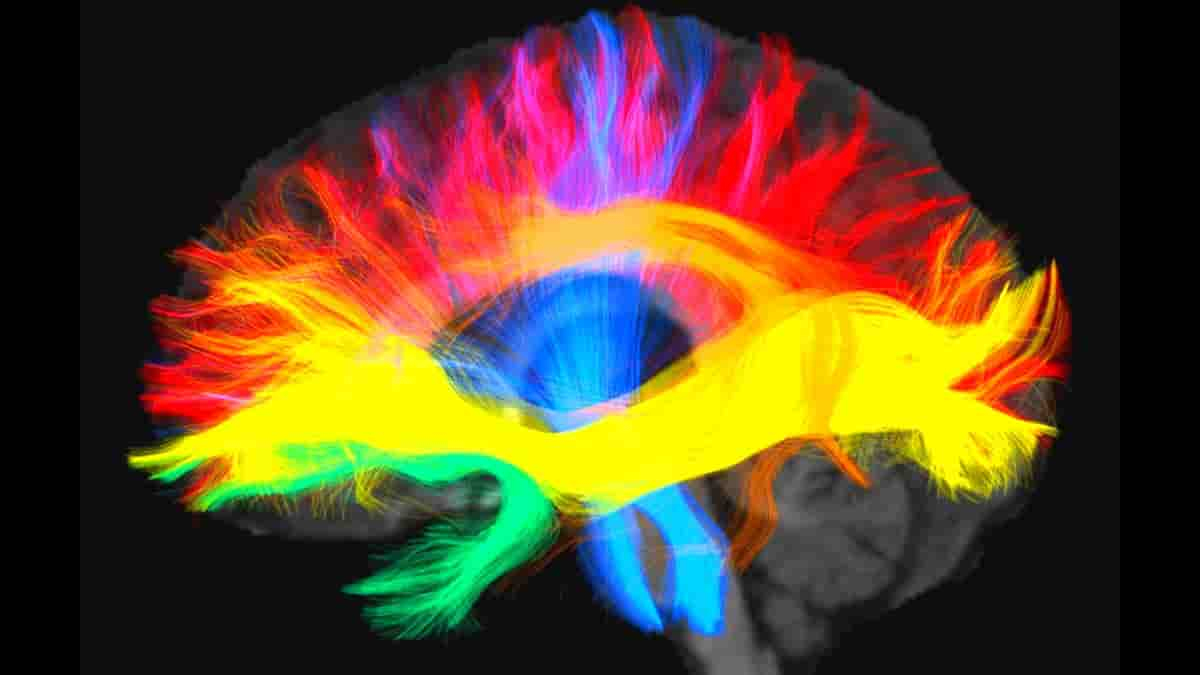Scientists at the Max Planck Institute for Human Cognitive and Brain Sciences in Leipzig discovered evidence that the language we speak shapes brain connectivity, which may underpin how we think. They examined the brains of native German and Arabic speakers using magnetic resonance tomography and discovered differences in the wiring of the language regions in the brain.
Xuehu Wei, a doctoral student in the research group led by Alfred Anwander and Angela Friederici, compared brain scans of 94 native speakers of two very different languages and discovered that the language we grow up with influences brain wiring. A magnetic resonance imaging (MRI) machine was used to scan two groups of native German and Arabic speakers.
“Arabic native speakers showed a stronger connectivity between the left and right hemispheres than German native speakers. This strengthening was also found between semantic language regions and may be related to the relatively complex semantic and phonological processing in Arabic,”
said Alfred Anwander, last author of the study.
Structural Language Networks
The high-resolution images show the anatomy of the brain and the connectivity between language brain areas, thanks to a technique known as diffusion-weighted imaging. The data showed that the language network’s axonal white matter connections adapt to the processing demands and difficulties of the mother tongue.
Native German speakers, the researchers discovered, had stronger connectivity in the left hemisphere language network, known as the intra-hemispheric frontal-parietal/temporal network. They contend that their findings are related to the complex syntactic processing of German, which is caused by free word order and a greater dependency distance between sentence elements.
Learning and the environment influence processing and cognitive reasoning in the adult brain by modulating brain connectivity during childhood. Language is learned by parts of the brain that are also used for many other things and were even around before people.
“Our study provides new insights how the brain adapts to cognitive demands, that is, the structural language connectome is shaped by the mother tongue,”
said Anwander.
This is one of the first studies to document differences in the brains of people who grew up speaking different native languages, and it could help researchers understand cross-cultural brain processing differences. The next study will look at longitudinal structural changes in the brains of Arabic-speaking adults as they learn German over a six-month period.
Abstract
Is the neuroanatomy of the language structural connectome modulated by the life-long experience of speaking a specific language? The current study compared the brain white matter connections of the language and speech production network in a large cohort of 94 native speakers of two very different languages: an Indo-European morphosyntactically complex language (German) and a Semitic root-based language (Arabic). Using high-resolution diffusion-weighted MRI and tractography-based network statistics of the language connectome, we demonstrated that German native speakers exhibited stronger connectivity in an intra-hemispheric frontal to parietal/temporal dorsal language network, known to be associated with complex syntax processing. In comparison, Arabic native speakers showed stronger connectivity in the connections between semantic language regions, including the left temporo-parietal network, and stronger inter-hemispheric connections via the posterior corpus callosum connecting bilateral superior temporal and inferior parietal regions. The current study suggests that the structural language connectome develops and is modulated by environmental factors such as the characteristic processing demands of the native language.
Reference:
- Xuehu Wei, Helyne Adamson, Matthias Schwendemann, Tomás Goucha, Angela D. Friederici, Alfred Anwander. Native language differences in the structural connectome of the human brain. NeuroImage, Volume 270, 2023, 119955, ISSN 1053-8119
